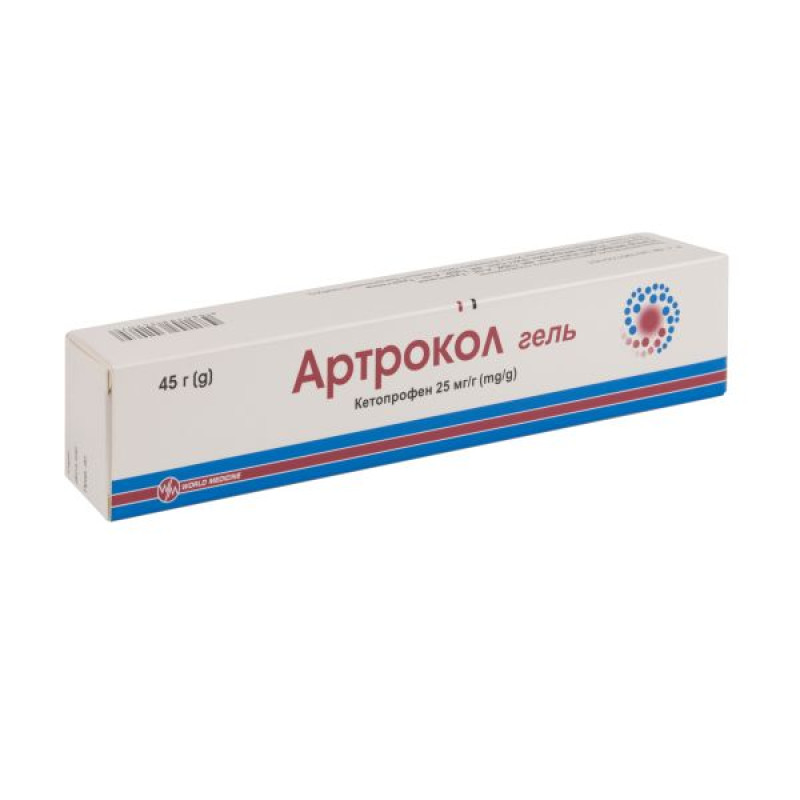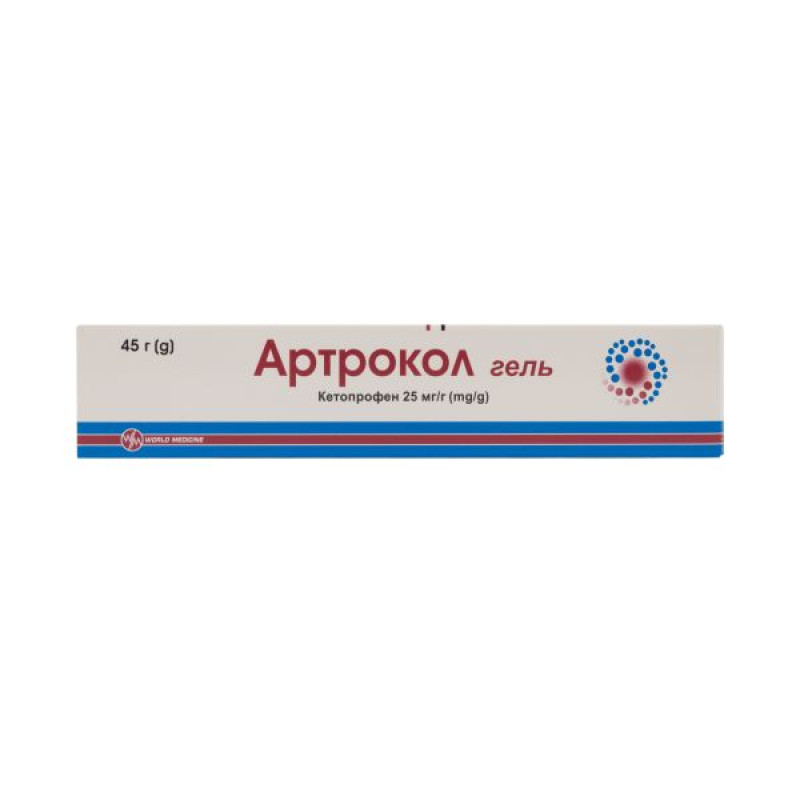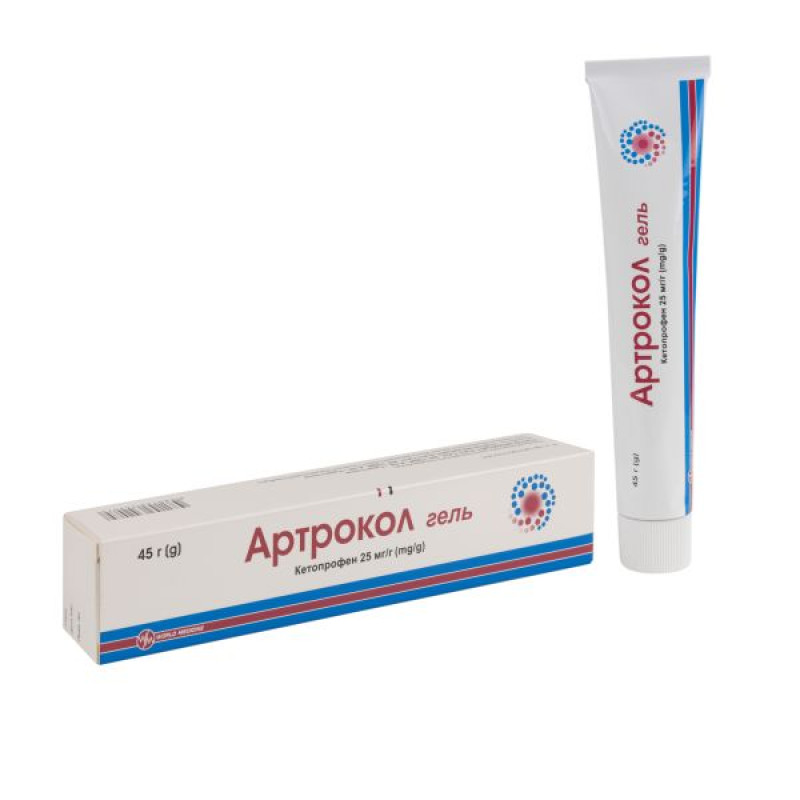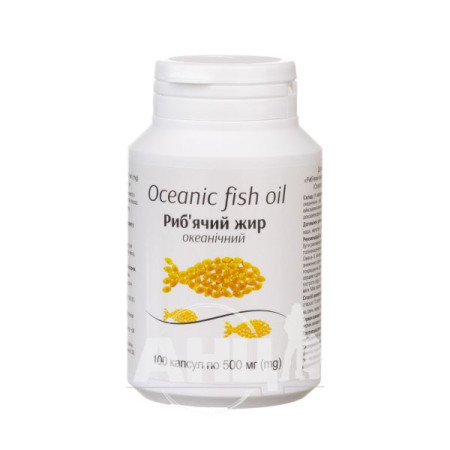Artrokol gel 25 mg/g tube 45 g

Instructions Artrocol gel 25 mg/g tube 45 g
Composition
active ingredient: ketoprofen;
1 g of gel contains ketoprofen 25 mg;
excipients: carbomer 980, triethanolamine, ethanol 96%, methylparaben (E 218), purified water.
Dosage form
Gel.
Main physicochemical properties: transparent, colorless, homogeneous gel with a faint odor of alcohol.
Pharmacotherapeutic group
Nonsteroidal anti-inflammatory drugs for topical use. ATC code M02A A10.
Pharmacological properties
Pharmacodynamics
Ketoprofen belongs to the group of nonsteroidal anti-inflammatory drugs (NSAIDs), arylpropionic acid derivatives. Its mechanism of action is associated with inhibition of prostaglandin synthesis. It has a local analgesic, anti-inflammatory, and antiexudative effect.
Pharmacokinetics
Plasma and tissue levels of ketoprofen were measured in 24 patients undergoing knee surgery. After multiple dermal applications of ketoprofen gel, plasma levels were approximately 60-fold lower (9–39 ng/g) than after a single oral dose of ketoprofen (490–3300 ng/g). Ketoprofen levels in tissues at the application site were in the same concentration range for the gel and oral formulations, with the gel showing a significantly higher degree of interindividual variability.
The bioavailability of ketoprofen after topical administration is approximately 5% of the level after oral administration (based on urinary excretion data).
The degree of binding to plasma proteins is approximately 99%. Ketoprofen is excreted by the kidneys mainly in the form of a glucuronide conjugate.
Indication
Relief of acute painful conditions of the musculoskeletal system caused by trauma, such as sports injuries, dislocations, sprains and bruises.
Pain from mild arthritis.
Contraindication
Hypersensitivity reactions, such as symptoms of bronchial asthma, allergic rhinitis, have been reported with the use of ketoprofen, fenofibrate, tiaprofenic acid, acetylsalicylic acid or other NSAIDs.
Hypersensitivity to other components of the drug.
Any history of photosensitivity reactions.
History of skin allergy to dexketoprofen, ketoprofen, tiaprofenic acid, fenofibrate, ultraviolet (UV) blockers, or perfumes.
Exposure to sunlight (even diffused light) or UV radiation in a solarium during use of the medicinal product and for 2 weeks after stopping its use.
Use in the presence of pathological changes on the skin, such as eczema or acne.
Application to infected skin, open wounds, mucous membranes, anal or genital area, in the eyes, under occlusive dressings.
Use in the third trimester of pregnancy.
Interaction with other medicinal products and other types of interactions
Systemic absorption of ketoprofen when applied topically is very low, so interactions are unlikely.
No interactions with other drugs have been reported, but the following interactions have been identified with oral forms of ketoprofen or other NSAIDs.
Serious interactions have been reported with concomitant systemic use of NSAIDs, including ketoprofen, with methotrexate.
Application features
The drug should be used with caution in patients with cardiac, hepatic or renal insufficiency. There have been isolated reports of systemic adverse reactions associated with renal damage.
Local application of large amounts of ketoprofen may lead to systemic effects such as hypersensitivity and bronchial asthma. Patients with bronchial asthma in combination with chronic rhinitis, chronic sinusitis and/or nasal polyps have a higher risk of developing allergy to acetylsalicylic acid and/or NSAIDs than the rest of the population.
Serious skin reactions, such as Stevens-Johnson syndrome, have been reported in association with the use of NSAIDs, including ketoprofen gel. Patients using the drug should be informed of the signs and symptoms of serious skin reactions. At the first appearance of skin rash, mucosal lesions, or any other sign of hypersensitivity, the drug should be discontinued.
Do not exceed the recommended duration of treatment, as the risk of developing contact dermatitis and photosensitivity reactions increases over time.
In addition, the following precautions should be observed when using the medicine:
Wash your hands thoroughly after each application of the gel;
If any skin reactions occur, including those associated with the concomitant use of medicines containing octocrylene (some cosmetic or hygiene products), its use should be discontinued immediately;
Do not apply the gel under an occlusive dressing;
Do not apply the gel to mucous membranes or intraocularly;
the gel should not be applied near an open flame because it contains alcohol;
Exposure to sunlight (even on a hazy day) or exposure to UV rays in a solarium while using topical ketoprofen may cause potentially serious skin reactions (photosensitization). To avoid the development of photosensitization skin reactions, it is recommended to protect the skin areas where the gel is applied with clothing during treatment and for 2 weeks after stopping its use. You should also avoid visiting a solarium during treatment and for 2 weeks after stopping its use.
The drug contains ethanol, but no precautions are required regarding the dose of ethanol and its route of administration.
The medicine contains methylparaben (E 218), which may cause allergic reactions (possibly delayed).
Use during pregnancy or breastfeeding
I and II trimesters of pregnancy
No embryotoxic effects were observed in animals. There are no clinical data on the use of topical forms of ketoprofen during pregnancy. Even if the systemic exposure is lower compared to oral administration, it is not known whether the systemic exposure of ketoprofen achieved after topical administration could be harmful to the embryo/fetus. During the first and second trimester of pregnancy, the drug should not be used unless clearly necessary. If used, the dose should be as low as possible and the duration of treatment as short as possible.
3rd trimester of pregnancy
During the third trimester of pregnancy, systemic use of prostaglandin synthetase inhibitors, including ketoprofen, may cause cardiopulmonary and renal toxicity in the fetus. At the end of pregnancy, prolonged bleeding may occur in both the mother and the child, and labor may be delayed. Therefore, the use of the drug is contraindicated during the third trimester of pregnancy (see section "Contraindications").
Breastfeeding period
Ketoprofen passes into breast milk in minimal amounts. The drug should not be used during breastfeeding.
Ability to influence reaction speed when driving vehicles or other mechanisms
There are no data on the effect of topical ketoprofen on the ability to drive or use machines.
Method of administration and doses
The medicine is intended for topical use (on the skin).
Apply the gel to the affected area with a thin layer 2-4 times a day and rub in gently until completely absorbed. The usual recommended dose of the gel is 15 g (14 cm of gel corresponds to 7.5 g). The duration of treatment is 7 days.
Elderly patients
There are no specific dosage recommendations for such patients.
Children
The medicine should not be used in children.
Overdose
With topical (cutaneous) application, overdose is unlikely.
Accidental ingestion of the gel may cause systemic adverse reactions depending on the amount ingested. In the event of such reactions, supportive and symptomatic treatment should be provided.
Adverse reactions
Adverse reactions are classified by organ system and frequency: very common (≥ 1/10), common (≥ 1/100, < 1/10), uncommon (≥ 1/1000, < 1/100), rare (≥ 1/10000, < 1/1000), very rare (< 1/10000), frequency unknown (frequency cannot be estimated from the available data).
On the part of the immune system:
frequency unknown - hypersensitivity reactions, including anaphylactic shock, angioedema.
Skin and subcutaneous tissue disorders:
uncommon – local skin reactions such as erythema, eczema, itching, burning; rare – photosensitivity reactions, urticaria; very rare – bullous and phlyctenulous eczema, which can spread and become generalized; frequency unknown – Stevens-Johnson syndrome.
From the kidneys and urinary tract:
very rarely - worsening of existing renal failure.
Reporting of suspected adverse reactions
Reporting suspected adverse reactions that occur after the registration of a medicinal product is very important. This allows for continuous monitoring of the benefit/risk balance of the medicinal product. Healthcare professionals should report any suspected adverse reactions through the national pharmacovigilance system.
Expiration date
3 years.
Storage conditions
Store at a temperature not exceeding 25 ºС in a place inaccessible to children.
Packaging
45 g in a tube, 1 tube in a cardboard box.
Vacation category
According to the recipe.
Producer
WORLD MEDICINE ILACH SAN. VE TIJ. A.Sh./WORLD MEDICINE ILAC SAN. VE TIC. AS
Location of the manufacturer and address of its place of business
15 Temmuz Mahallesi Cami Yolu Caddesi No:50 Gunesli Bagcilar/Istanbul, Turkey/15 Temmuz Mahallesi Cami Yolu Caddesi No:50 Gunesli Bagcilar/Istanbul, Turkey.
Applicant
WORLD MEDICINE LLC, Ukraine/WORLD MEDICINE, LLC, Ukraine.
There are no reviews for this product.
There are no reviews for this product, be the first to leave your review.
No questions about this product, be the first and ask your question.















